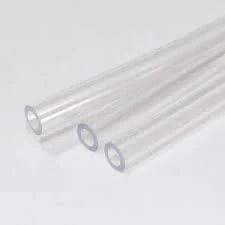dec . 16, 2024 01:23 Back to list
Cost Analysis for HDPE Pipe Installation and Maintenance in Construction Projects
Understanding the Cost of HDPE Pipe Factors and Considerations
High-Density Polyethylene (HDPE) pipes have gained immense popularity in various industries, from water distribution to sewage systems, due to their superior durability, resistance to corrosion, and flexibility. However, one of the significant considerations in the implementation of HDPE piping systems is their cost. This article delves into the key factors that influence the cost of HDPE pipes and offers insights into budgeting for your next project.
What is HDPE Pipe?
HDPE pipe is a type of plastic pipe made from high-density polyethylene. It is characterized by its high strength-to-density ratio and is commonly used for piping systems in water, sewage, gas distribution, fire systems, and more. The material is lightweight, which facilitates easier handling and installation compared to traditional pipes made from metal or concrete.
Factors Influencing HDPE Pipe Costs
1. Material Quality The quality of the HDPE used to manufacture the pipe plays a crucial role in determining its cost. Higher-grade materials, which may come with certifications for certain applications (such as potable water systems), tend to be more expensive. However, investing in high-quality materials ensures longevity and reduces maintenance needs.
2. Pipe Diameter and Wall Thickness The dimensions of the pipe directly affect the cost. Larger diameters and thicker walls require more material, which in turn increases the price. When budgeting, it’s essential to determine the necessary specifications for your project to avoid overspending on unnecessary capacity.
3. Manufacturing Process The method of production can also influence pricing. Pipes manufactured through advanced processes—such as co-extrusion or using specialized equipment—may incur higher costs due to the technology and expertise required. Understanding these manufacturing nuances allows buyers to make informed decisions based on their budget and quality requirements.
4. Market Demand and Supply Like any commodity, the price of HDPE pipes can fluctuate based on market conditions. Regions experiencing shortages might see increased prices, while in areas with robust supply chains, costs may stabilize. Staying informed about market trends can help businesses anticipate changes in pricing.
hdpe pipe cost

5. Installation Costs While purchasing HDPE pipes is essential, it’s equally important to account for installation costs. HDPE installation generally requires specialized equipment, such as fusion machines for joining pipes. Labor costs can also vary depending on the complexity of the installation and local labor rates. Ensuring you include these factors in your budget will provide a clearer picture of the total costs involved.
6. Transportation Logistics The cost of transporting HDPE pipes to the job site can also impact overall expenses. The pipes are lightweight, which can reduce transportation costs, but distance and regional regulations may still lead to increased logistics expenses. Therefore, evaluating suppliers based on proximity and transportation capabilities can yield savings.
7. Long-term Savings and ROI While HDPE pipes might have a higher initial cost compared to other materials, they offer lower maintenance costs and longer lifespan, translating to significant long-term savings. A thorough cost-benefit analysis that includes these factors can help justify the initial expenditure.
Budgeting for HDPE Pipe Projects
When planning a project involving HDPE pipes, it is critical to create a comprehensive budget that incorporates all potential costs. Start with a thorough understanding of your project requirements, including material specifications and installation complexities. Consult with suppliers to obtain accurate pricing quotes and seek multiple offers to ensure competitive rates.
Additionally, consider collaborating with experienced engineers or contractors who can provide insights on efficient installation methods and potential areas for cost reduction without compromising quality. Finally, always leave a buffer in your budget for unforeseen expenses, as administrative delays or unexpected site conditions can arise.
Conclusion
The cost of HDPE pipes is influenced by various factors, including material quality, pipe size, manufacturing methods, and market conditions. By carefully analyzing these elements and planning accordingly, you can effectively manage costs and ensure that your investment in HDPE piping systems is both economical and efficient. In conclusion, understanding the nuances of HDPE pipe costs can lead to informed decisions that benefit both your project and your bottom line.
-
Durable PP Rigid Sheet: Lightweight, Chemical Resistant Solutions
NewsAug.21,2025
-
PVC Grey Sheet for Extraction: Chemical Resistant & Durable
NewsAug.19,2025
-
Durable PVC Pipe Fittings for Plumbing & Irrigation Needs
NewsAug.18,2025
-
HDPE Steel Belt Reinforced Spiral Corrugated Pipe | High Strength
NewsAug.17,2025
-
HDPE Pipe Fittings: Durable, Leak-Proof Solutions
NewsAug.16,2025
-
Premium CPVC Sheet: High-Temp & Chemical Resistant Solutions
NewsAug.15,2025

